Ahem. I say Tudor-style because it's a pale imitation of the incredibly elaborate pies our ancestors would knock up on feast days and it's not an authentic recipe. But verily, it tastes really good.
I based it on one I saw food historian Ivan Day make on a television cookery programme. I'm not sure whether the original recipe was Tudor - the period ran from 1485 to 1603 - but it was common for treasured, often hand-written cookery books to be passed down the generations and they frequently contained earlier recipes.
The bulk of our house was built between about 1500 and 1640, so I've developed an interest in historical recipes. In fact I've signed up for an online course on Royal food, which I'll probably bang on about endlessly in the coming weeks. You have been warned.
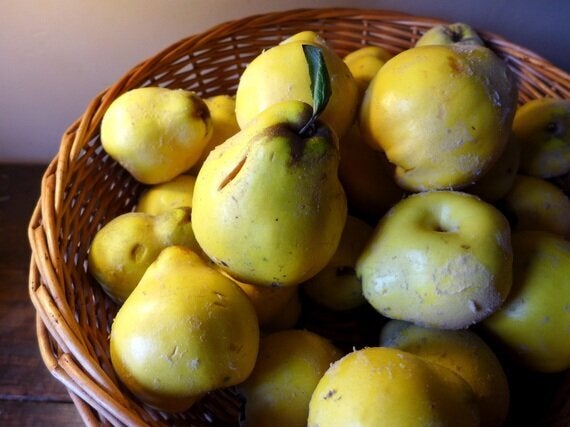
But back to my faux-Tudor pie. It contains a quince preserve, also inspired by the Ivan Day TV segment, but you could use fresh quince or quince jelly instead or just go with apples. If you use fresh quince, you'd be well-advised to poach it briefly first as it takes longer to cook than apples and can be grainy.
Mr Day included two or three cloves in his pie. I missed them out, because they're not my favourite spice and because I'd already put some in the spice bag for the quince preserve. Use sparingly if you include them.
And the pastry comes from Regula Ysewijn's lovely book Pride and Pudding, used here with permission. It's a modern interpretation of one of the earliest recorded recipes for shortcrust, the 16th century A Proper New Booke of Cokerye*:
"To maek short paest for tarte. Take fyne floure and a cursey of fayre water and a dysche of swete butter and a lyttel saffron, and the yolckes of two egges and make it thynne and as tender as ye maye."
Tudor-style Apple and Quince Pie (serves 6, using a 21cm pie tin)
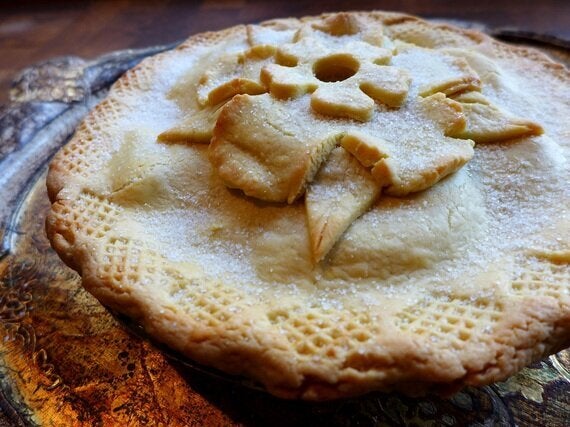
Ingredients:
3 largeish cooking apples (I used Bramleys)
Juice of 1/2 lemon
4 heaped tspns quince preserve
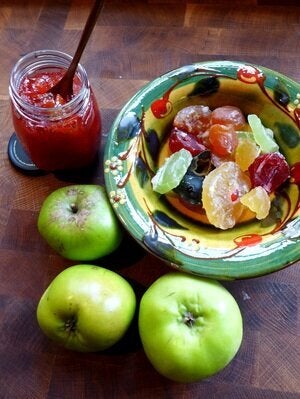
1 heaped tbsp chopped mixed peel
Sugar, to taste
For the pastry:
A pinch of saffron threads
2 tbsp cold water
200g cold butter
360g plain flour
40g icing sugar
Pinch of salt
2 egg yolks
Milk to glaze
Caster sugar to dust
Method:
First make the pastry. Soak the crumbled saffron in water. Cut the butter into small pieces. Lightly grease your pie tin with a little butter.
Put the flour into a food processor with the butter, sugar and salt. Pulse briefly until the mixture looks like breadcrumbs. To mix by hand, use a blunt knife, cutting the knife through the butter and flour to work them together.
Add the saffron water and egg yolks and pulse until you get big lumps, then turn the pastry onto a lightly floured board and knead briefly until smooth. Wrap in cling film and refrigerate for 30 minutes or until you're ready to use it.
Pre-heat the oven to 200C/400F/Gas Mark 6.
Squeeze the lemon juice into a bowl. Peel, quarter and core the apples, then cut them into slices, tossing them in the lemon juice so they don't brown.
Turn the dough onto a lightly floured board and cut it in half, re-wrapping the half you're not using for the moment. Take the other piece and press and knead it into a flat disc, then roll into a circle big enough to fit the base of your pie tin. Drape it over the rolling pin and lift it into position, pushing it gently so it fits snugly. Cut off the excess pastry.
Put in half of the apples and sprinkle with a little sugar - go easy, as the quince preserve and candied peel are already sweet. Blob in the quince preserve and scatter with the candied peel.
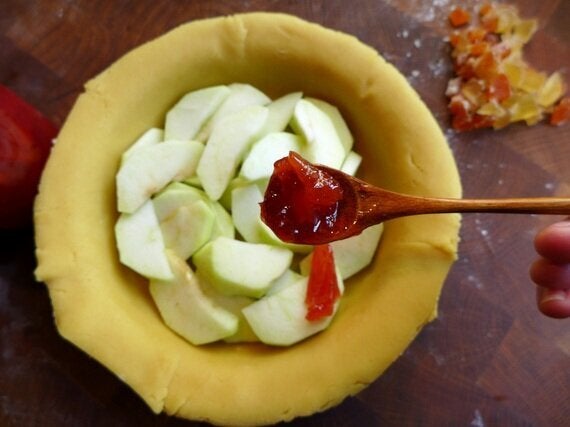
Arrange the remaining apples on top, mounding them slightly towards the centre for a more professional finish. Sprinkle with a little more sugar.
Now roll out the remaining half of the pastry to make the pie lid. Dampen the edges of the pie with a little milk and put on the lid, crimping and pressing to seal. Cut a small hole in the centre for steam to escape.
Glaze the top with milk and re-roll the pastry scraps to decorate the pie - I made a Tudor rose** - but make sure you don't cover the steam vent.
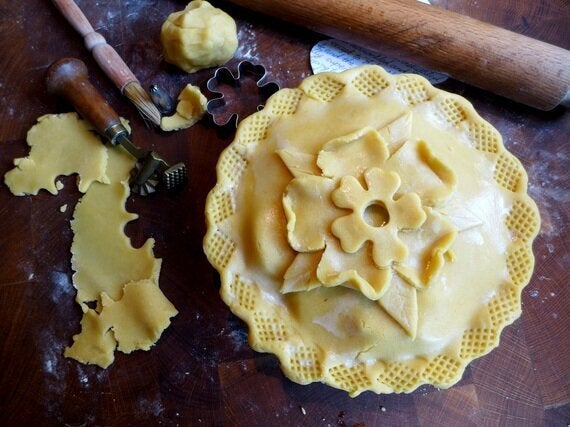
Bake for 30-35 minutes in the centre of the oven or until the pastry is brown and crisp and the fruit tender. If it looks as though it might catch, cover it loosely with foil and put it at the bottom of the oven.
When it's done, remove from the oven and scatter with castor sugar. Serve warm or cold.
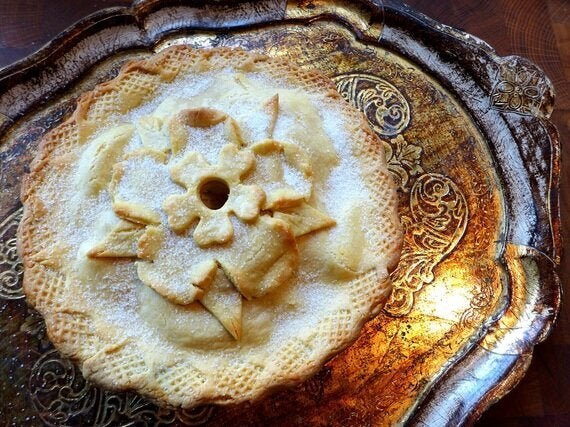
*There are several repro editions of this book. The one I have was edited by Anne Ahmed and published in 2002 by Corpus Christi College, Cambridge. The original, created in 1557/1558, is thought to have belonged to Margaret Parker, wife of the college's 14th Master, Matthew (later Archbishop) Parker.
** I cut my template out of an old postcard but if you are handier than me you can make your own cutters - check out this post from Ink Sugar Spice.